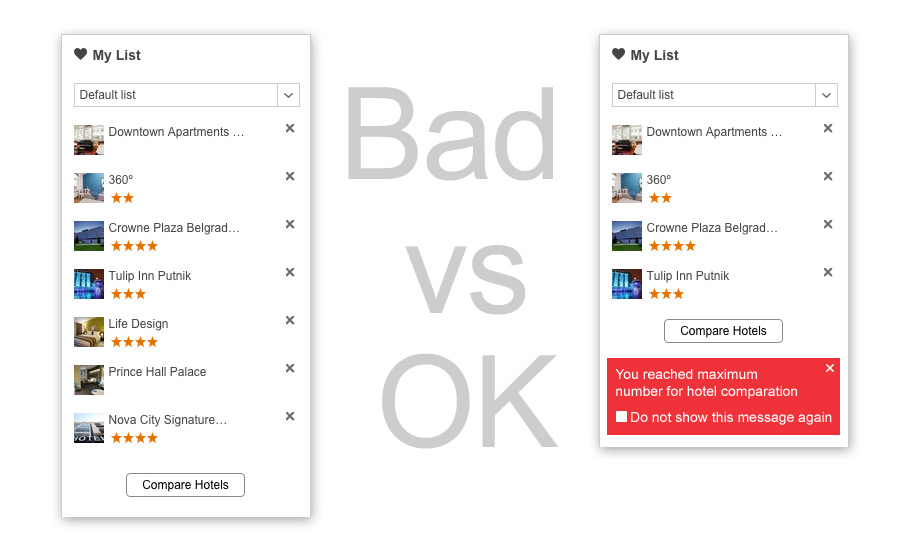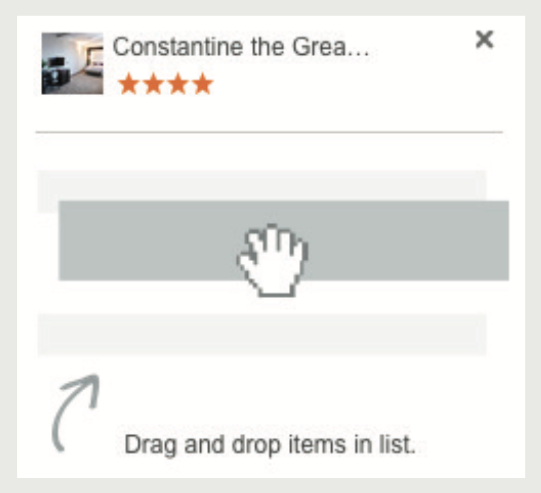Brief
Choosing the right hotel in a big city can be overwhelming. Users typically want to compare several options before booking. Trivago offers this functionality, but it’s tucked away behind an interface pattern that’s not immediately clear.
Problem
During testing, I noticed the “compare” action was hidden behind a heart icon on hotel images. This visual choice typically signals a “like” or “save” action—not comparison. Users clicking it might expect to see a favorites list or a social share pop-up, not a comparison sidebar.
This subtle misalignment causes hesitation and confusion. Worse, when users aren’t aware of the built-in comparison feature, they tend to open multiple hotel tabs, which increases cognitive load and the chance of abandoning the process altogether.
| Never give users a false hope.
Insight
When hotel comparison isn’t obvious, users default to opening multiple tabs, which leads to drop-offs. A clearer visual metaphor—such as a “compare” button or checklist—could better signal the action.
UX clarity at this micro-level can dramatically improve conversion and retention during the decision phase.
Quick solution.
Stop me at number 4. Isn’t much easier to just say: Hey man, you have filled the maximum fields for comparison! Put the red box below the fourth hotel in the right sidebar.

Expand options with more than just 4 products.
Wrap 4 in a row and make it as the carousel. And of course, add a swipe option for tablet and mobile devices.

Move it even further.
Sort it in the row of 4. Put the mini list on the right sidebar.
Even further…
Use it for drag and drop.
Even further…
For older and less experienced users add illustrated tutorials.
Make it responsive.
With this technique, you can easily make it for smaller displays as well (Tablets, Phablets and Mobile). Reduce row numbers from 4 to 3 and for mobiles from 3 to 2.

Impact
After addressing the UX friction and clarifying the comparison functionality, drop-offs during the decision-making process decreased by 5x. Users were more confident using the built-in comparison tool, staying within a single tab instead of juggling multiple ones.
This smoother experience directly impacted user retention and conversion. As a result, sales increased significantly—jumping by millions, validating how a small UX improvement can deliver massive business value.


